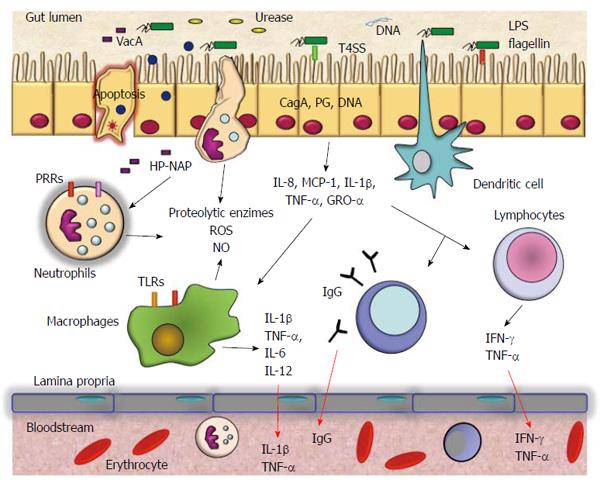Copyright
©2014 Baishideng Publishing Group Inc.
World J Gastrointest Pathophysiol. Nov 15, 2014; 5(4): 400-404
Published online Nov 15, 2014. doi: 10.4291/wjgp.v5.i4.400
Published online Nov 15, 2014. doi: 10.4291/wjgp.v5.i4.400
Figure 1 The inflammatory response in Helicobacter pylori infection.
Immune cells are recruited to the lamina propria of the gastric epithelium by chemokines and cytokines (IL-8, MCP-1, GRO-α, IL-1β, TNF-α) produced by epithelial cells or directly by bacterial products including H. pylori neutrophil-activating protein, VacA, and urease. At the site of infection, the immune cells are activated and exert their effector functions, including the production of cytokines (IL-1β, TNF-α, IL-6, IL-12, IFN-γ, chemokines (IL-8, MCP-1), proteolytic enzymes, oxide nitric (NO) and reactive oxygen species (ROS). PG: Peptidoglycan; T4SS: Type IV secretion system; IL: Interleukin; TNF: Tumor necrosis factor; MCP: Macrophage chemotactic protein; GRO: Growth-regulated oncogene.
-
Citation: Álvarez-Arellano L, Maldonado-Bernal C.
Helicobacter pylori and neurological diseases: Married by the laws of inflammation. World J Gastrointest Pathophysiol 2014; 5(4): 400-404 - URL: https://www.wjgnet.com/2150-5330/full/v5/i4/400.htm
- DOI: https://dx.doi.org/10.4291/wjgp.v5.i4.400









